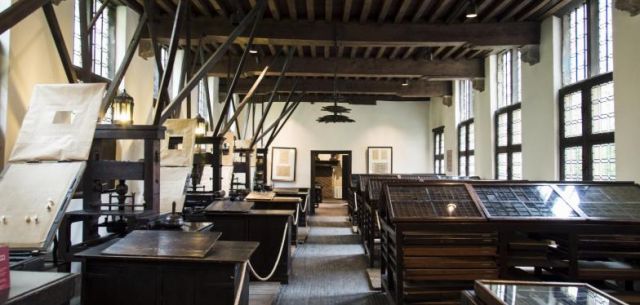#feministfriday episode 260 | boeken, boeken, boeken!
It is still I, Alex's friend Kerry, and hello from Antwerp! This week there is lots of genever, and a summer school on historical book ownership involving one of the most excellent museums in Europe, the Plantin-Moretus printing museum.
Thank you for reading last week, and especially for your feedback. OK, I heard you say, it's all very well about these early modern women in literary culture, but how exactly were the books themselves printed? Where is the materiality?!
Well have I got the place, and family story, for you!!
In the 1570s, Christophe and Jeanne Plantin set up a printshop in Antwerp in 1570s. A 16th-century printshop was different than how we think of book publishing today: the creative work of commissioning and editing happened in the same place, and often by the same people, as the physical production activity of printing like setting type, rolling ink and pressing pages.
The Plantins had five daughters, and this family is seriously ready for an ITV ten-episode miniseries or really lush atmospheric novel by Sarah Perry or Jessie Burton. The daughters – Margaret, Martine, Catharine, Madeleine and Henriette (or Henrica, which seriously sounds like a font) – all worked in the printshop, setting type (which is extremely hard! You have to read upside down and backwards, Ginger Rogers through the centuries) and checking the proofs.
That all of the daughters worked there is especially exciting because the Plantin printshop specialised in books in multiple alphabets, especially Hebrew, Syrian and Greek. The printshop's most famous work was the 'Polyglot Bible' – printed in six languages – which was commissioned by Philip II of Spain; and one of the known proofreaders was third daughter Madeleine Plantin, who at the time was in her early teens.
Some people (men) have challenged the idea that the Plantin girls could read, instead of just matching letters like-for-like like a memory game. A male visitor to the shop wrote to a friend about what he saw, and stress very vehemently that Madeleine was only matching the characters. This cracks me up for two reasons: it's an attempt to diminish a girl's education as if being able to quickly match long strings of characters without understanding them wouldn't also be incredibly impressive; and also it is literally factually wrong! Plantin wrote himself that he had educated them in different languages to be able to work with him:
I arranged for the four oldest, according to their age and place in the family, to learn how to read and write properly, so that between the ages of four or five and twelve, they were able to assist with proofreading in any language or any alphabet.
Ah, the great thing about feminism in the past is that it's hard to decide whether to be delighted by women learning lots of languages, or horrified by the child labour.
Printers in the 16th century had a lot of control over what they produced, including commissioning writers and scholars, and therefore over what ideas were able to spread; it's exciting to me that the Plantin printshop – at its time, the biggest in the world – had so many women doing the work of creating books.

Many thanks for reading, it has been a genuine pleasure writing for you these past two weeks! I'm handing back over to Alex but you can find me at @kerrypolka or reply to this if you want to email further about feminist book printing and/or headchopping! ❤️